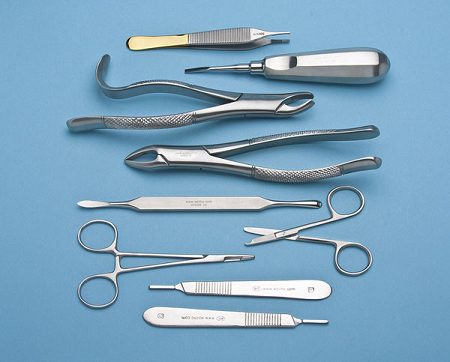Dental procedures require certain tools to accomplish any task without failure. If anyone wants to have pain free wisdom teeth removal, they need to choose the right dentist who chooses the right tools to implement the process. Mostly, the patients who approach for the wisdom teeth removal are adults. Wisdom teeth removal for adults is quite harder to handle as it is surrounded by stronger supporting tissues and longer root length, so that it needs certain tools and techniques to remove them.
Tools Used for Wisdom Teeth Removal
Forceps
Forceps come with the sharper blades and long handles that deliver superior results. Many forceps designed for primary or baby tooth that assist dentist to do larger dental tasks. You can find forceps in numerous sizes, shapes and types.
Types of forceps:
Blades in the forceps vary in width, length and curvature to perform on the different shapes of the root.
- Straight forceps are designed in a simplest way, which is perfect to handle front teeth.
- Upper premolar forceps are specifically designed for premolar tooth; it allows the blades to enter to the mesial direction.
- Lower root forceps designed with the handles at roughly 90 degree from the blades. The design allows dentist to control the direction and position of the blades.
- Lower molar forceps designed to handle lower molar which has two mesial roots such as fused and distal root.
- Upper molar forceps are designed to handle upper molar teeth that have three roots such as two buccal roots and one palatal root.
- Bayonet forceps have designed for the easy access in the upper third molars; the shape resembles the bayonet riffle attachment.
- Cowhorns forceps are used to split the diverged roots of molars.
These forceps provides comfort treatment for the patients. These forceps are designed to handle all kinds of tooth especially wisdom tooth that will be a major part of dental surgery. People mostly prefer wisdom teeth as wisdom teeth removal cost is value for your money and improve the quality of life.
Elevators
Handle, shank and blade are the three components of elevator. Elevators apply less directional force on the tooth so that the tooth will have less chance to get fractured. Elevators are different from forceps and are designed to apply force in between tooth and bone so that, the jaw won’t impact by force.
Benefits of Elevators
- Helps to break the attachment of the tissues that is supporting the tooth
- Helps to expand the tooth for tooth extraction
- It provides strong grip
- Helps to remove root stumps easily
Scalpel
Scalpel has a No. 15 thin blade which helps to make incisions on the gums. With the help of scalpel, dentist can easily accomplish tooth extraction task by giving enough comfort to the patients.
Periosteal Elevators
Periosteal elevators are similar to the elevators but have two heads at each end. Two head varies in functioning as one has sharp-tipped end while other one has a blunt end. Both are used to expand the tooth socket and remove the granulation tissues.
Surgical Bars
Surgical bars are designed with a straight hand piece that is used to remove the bone surrounding the tooth that is expected to be removed. Generally, surgical bars can be used on conscious patients, as it is painless and comfortable.
Needle Holders and Sutures
Sutures are used to secure or regain the gum flap to its former position. It also helps in controlling bleeding, reducing the size of wound, and removes any food debris. The material used for sutures can be either absorbable or non-absorbable.
Other Tools
In addition to these, there are some other basic tools are being used in the dental field. They are:
- Scissors
- Aspirator
- Artery Forceps
- Bone ronguer and bone file
- Bone curettes
- Chisels and mallet
These are the tools commonly used for wisdom teeth removal Sydney to produce successful and painless results.

